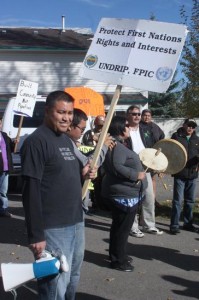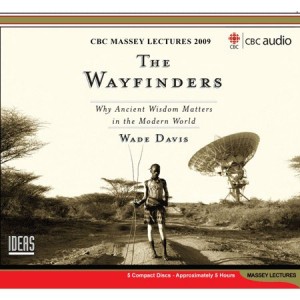Category — Module 2
Module Two Websites
In my search for information on education for Canadian Aboriginal health care providers, the Medical Journal of Australia surprised me with an article on just that very subject. Anderson and Lavallee (2007) described new educational goals for Canadian First Nations medical students, agreed upon at the 2005 Kelowna Accord. The deal was characterized as “historic”. In it, federal, provincial, and First Nations were adapting health education to better support First nations “cultural competencies.” These lofty statements were short on specifics but the proposal came with a $100 million pledge of support over 5 years.
On an interesting note, UBC and the Universities of Manitoba and Alberta were given credit for already adapting their curriculum to better embrace the aboriginal student. As a reminder, my posting last week of the Province newspaper article mentioned UBC’s largest First Nations graduating class in 2012.
Also, Anderson and Lavallee (2007) noted how First Nations were being invited to control their own community health programs. In their report on the Kelowna Accord, reference to “the right of the indigenous people’s to set priorities and strategies for health programs affecting their communities” was made. I set about searching for confirmation.
2) http://fnbc.info/
This glossy, well linked site provided many helpful links to Indigenous health care. Because the site is managed by the First Nations Technology Council of Vancouver, I assumed, perhaps incorrectly, that the concise history provided was a better reflection of a First Nation’s perspective. It expanded my concept of Aboriginal health care providers to include midwives, at least.
Here was confirmation of First Nations administering their own health care. The collective goal of the Tripartite First Nations Health Plan (tripartite refers to federal, provincial and First Nations governments) was to ensure First Nations were “equal partners in the planning and management of health services for our people.” The Formal Consensus-based Decision Making Model first proposed by the Alaska Tribal Health Compact was recommended by First Nations in British Columbia as the model to use to facilitate equal partner status. This model will be investigated further.
3) http:www.canadianmidwives.org/main.cfm?1=en&p=04_2003)
Aboriginal students are invited to apply to every four year university midwife program in Canada but recently, the Kanaci Otinawawasowin Baccalaureat Program (KOBP) at the University College of the North in Manitoba opened specifically for the Aboriginal student. Introduced in 2006/07, the KOBP program has graduated 21 Aboriginal midwives as of 2010. Their program focuses on “traditional/indigenous midwifery knowlege and culturally appropriate learning pathways along with contemporary health, social and biological sciences.” One of their distinct teaching tools includes mentorship, something I need to understand more fully. What are the practicalities of a program involving mentorship? What makes that new? What makes that particularly Indigenous?
4) http://fnbc.info/sites/default/files/documents/FNHC_Health_Governance_Book-web2.pdf.
On this website, the connection between First Nations’ and their health is clearly spelled out. The connection is nothing less than “health, food, work, culture, family and community” combined. Social determinants such as these, only recently valuted in western medicine, are integral to Aboriginal concepts of holistic health: “ancestors taught that understanding the land, leadership, sustainable use of resources and the ability to provide for family and community were essential to survival”. As long as physicians, nurses, and midwives can be recruited, community health care will be based on these all-encompassing concepts.
5) http://aerc.usask.ca/projects/healthtraing.html
The University of Saskatchewan website is a very rich resource for investigating First Nations health training. Among the many links are Indigenous specific definitions and teaching goals. For example, the link to “Indigenous pedagogy” offers a sensitive and thorough reflection on the topic.
I also found a paper by Dr. Alex Wilson (2008) discussing the creation of virtual Aboriginal Health Training Centres of Excellence – I’m still not certain if this concept ever made it off the ground but in the 23 pages of sound recommendations was a very helpful medicine wheel model for holistic healthcare. Emotional, Spiritual, Physical and Mental components are shown to be equal partners to Holistic Indigenous Education.
October 14, 2012 No Comments
Bridging the Gap: The Need for First Nations Libraries…..
Hello,
Article #10: Bridging the Gap: The Need for First Nations Libraries.
This article was found searching ebscohost again from the UBC Library. The article was originally published within the Canadian Library Association magazine in mid 2005. The article was well-written by First Nations Lieutenant Governor of Ontario, James Bartleman. The main theme of the article was describing the ‘gap’ in opportunities to access library materials for First Nations communities.
The author also talks of the importance of having access to libraries for younger First Nations students, and the importance of hosting activities of celebration such as First Nations Public Library Week.
It is interesting to read articles written in first person on real struggles of access to libraries for First Nations people.
-Regen
October 14, 2012 No Comments
More Money to go to First Nations Library…..
Hello,
Entry #9: More money to go to First Nations Library
This short article was found on ebscohost from the UBC library, and describes how First Nations public libraries in Northern Ontario will be getting an additional $1 million dollars to upgrade its services. The article was written within the Ontario Birchbark Newspaper (May 2006) which has also been coming up frequently within internet searches. Just having an established First Nations newspaper speaks volumes for the benefit that any sort of organized public literacy can bring to a community.
In terms of my research, this is quite interesting because it now has piqued my curiosity as to how much each province gets each year in terms of funding. In searching throughout ebscohost for academic articles it appears that ‘gaming’ revenue is mentioned quite a bit within articles concerning the Province of Ontario and its First Nations populations.
Thanks.
-Regen
October 14, 2012 No Comments
The Wayfinders
Module #2
Site#5
I have included this book as I have found the authors perspective on global cultural diversity unsurpassed. Author Wade Davis an ethnographer and self described story-teller has travelled widely and shares his experiences of vastly different cultures from a global perspective. He has made his home base in central BC and has gained a respectful reputation among the Tahltan First Nations peoples as he has contributed to the opposition of development in the ‘Sacred Headwaters’ of the Stikine, Nass and Skeena rivers. Davis argues that globalization does not create harmony and integration among all groups. Instead he says, in many places it has wiped away languages, cultures and “visionary wisdom” (p.201)
Davis, W. (2009) Wayfinders Why Ancient Wisdom Matters in the Modern World. Toronto, Ontario: House of Anansi Press.
October 14, 2012 No Comments
Aboriginal Education Resources in B.C.
Module #2
Site #4
The BC Ministry of education offers a rich resource for aboriginal education of youth. Found at this site, http://www.bced.gov.bc.ca/abed/documents.htm, it includes a First Nations map of BC as well as a First Nations Language map. The site has native content lesson plans for grades 7,8 and 9 in language arts, science and socials math and P.E. and a resource guide for integrating aboriginal content from K-10. Finally, the site includes a framework for questioning resources for indigenous people’s in a respectful manner.
October 14, 2012 No Comments
Squamish Language
Module #2
Site #3
The Squamish Nation community has created this website as a revitalization of the Squamish language. Its purpose is to document, share and promote Squamish language. It includes relevant resources for any student in North Vancouver who is studying the First People in their community.
October 14, 2012 No Comments
Squamish Nation
Module 2
Site#2
In the spirit of placed based knowledge, I am gathering resources from my own geographic community. This website http://www.squamish.net/aboutus/ offers a clear, user-friendly reference about the Squamish Nation. It includes the history, direction and structure of leadership of the Nation. The website also describes the treaty negotiation timeline and its educational services and affiliations. The structure of the Squamish Nation leadership; hereditary and elected, is also covered.
October 14, 2012 No Comments
Our Words Our Ways
Module #2
Source #1
“OUR WORDS OUR WAYS Teaching First Nations, Inuit and Metis Learners” is an Alberta based comprehensive education package for elementary learners. The document can be found at https://education.alberta.ca/media/307199/words.pdf .The program links cooperative learning and community, with sharing of traditional values. It includes a helpful section on things to consider when selecting of aboriginal content for your class. Infused throughout the document are stories, which act as illustrations and examples of concepts taught and “shared wisdom” of traditional teaching that underlines the concepts.
October 14, 2012 No Comments
That Contentious Pipeline….

Carrier Sekani Tribal Chief Terry Teegee joins protestors outside the Joint Review Panel hearings into Enbridge’s proposed Northern Gateway pipeline Tuesday in Prince George
PRINCE GEORGE, Oct 14, 2012
There has been a lot of coverage of the proposed Enbridge pipeline in the news. What is surprising is that the current wind seems to be blowing against that mega-corporation. Global news often seems to take a biased “big business” perspective, but they must see the writing on the wall. BC Premier Christy Clark is slowly becoming more strongly opposed to the pipeline. She has stated from the outset that it is not an opposition based solely on financial issues. She is concerned with environmental issues as well. Enbridge is not looking strong globally, with spills taking a place of high visibility in the news (thanks Global!!) Hearings examining the technical specs and engineering have been taking place in Prince George, and so have the expected demonstrations. Carrier Sekani Tribal Chief Terry Teegee seems to be [temporarily] aligned with multiple levels of regional and provincial politicians. Teegee stated in the PGFreePress stated that the Joint Review Panel “is not taking the rights and title of First Nations people into account as it hears testimony and evidence from intervenors”. He also stated that “it baffles me why Enbridge would hang in there considering all the opposition to the project,” It does make me wonder several things:
- How many people are actually in support of this project?
- Can anyone/anything stop this project?
- Is Ottawa prepared to push this through regardless of the prevailing public opinion?
- Is the fact that First Nation concerns are not being addressed indicative of a larger problem, or is this an oversight?
See the article in its entirety at http://www.pgfreepress.com/news/173518791.html
October 14, 2012 No Comments
Welcoming Aspect of Community Relations
Weblog #2: Entry #2
In Victoria there is there is the Victoria Native Friendship Centre (VNFC), which lists the following aims on Community and Culture Relations page:
- To create better understanding between Frist Nations people and the general public, and to promote planning with government, health, welfare, church and other agencies to improve the quality of services and facilities for First Nations people in the community; and
- To encourage the public to take an informed interest in the promotion of these objectives and in the general well-being of First Nations people.
Implicit in aim Number 1 is the fact that there is a need to improve the understanding(s) between FN people and the general public. While there is no great surprise there, I did find aim Number 2 interesting in that there is a desire to engage the public involved in achieving aim Number 1. To me, it seems that there is a welcoming and inclusive tone to this second aim which hints that the creation of community is not to be looked at in isolation. A FN community is linked to the surrounding community and vice versa. My future searches need to revolve around tangible examples of such an interconnected relationship.
October 14, 2012 No Comments

